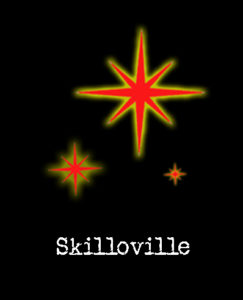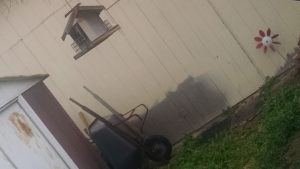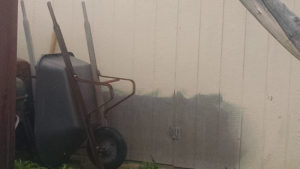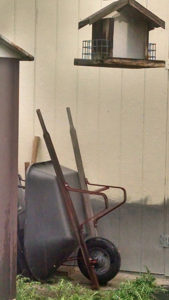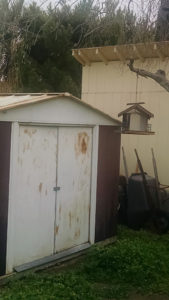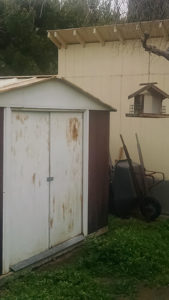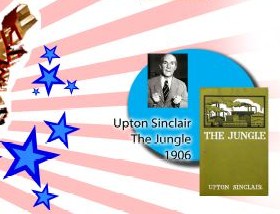Factory Run 4
Freely associated spoken words:
Fruit, Insect, Bird, Resource, Habitat, Wildlife
Categories:
• Participants
• Freely Associated Words
• Poem
• Syllable Count
Analysis:
Choose a haiku/poem and provide a creative analysis/interpretation by first using the mouse to “Copy” the work, then “Click” the “Reply” link immediately following this post, and “Paste” the work into the Reply/Comment box.
______________________________________________________
10 Works:
1.
Participants: Ryan, Kristiane, Jessica
Freely associated words:
Kiwi
Caterpillar
Emu (bird?)
Recycle
Home
Flower
Poem (Syllable count: 6, 6, 11) (23):
Kiwi birds and emus:
They can’t recycle home
Or find a caterpillar in the flower
Analysis:
Kiwi birds and emus are inferior.
No, joking. I don’t know.
Home is hard to find.
2.
Participants: Kristiane, Jessica, Paul
Freely associated words:
Bowl
Repellant
Feather
Navigation
Live
Sanctuary
Poem (Syllable count: 5, 6, 2, 3, 6, 3, 3) (28):
An advertisement:
Live feather repellant
You think:
I read this
For my sanctuary
Full of bowls
Of feathers.
Analysis:
This poem means that
There is something
Going on that I don’t
Know about.
3.
Participants: Jessica, Paul, Kaleb
Freely associated words:
Vegetable
Six
Flying
Environment
Animals
Animals
Poem (Syllable count: 5, 4, 6, 3, 3, 3, 6) (30):
“Environment”
– by Vegetable
Six flying animals
Animals
Jessica
Animals
Six flying animals
Analysis:
A Jessica – amidst six flying animals, return to
Earth to find her name, then takes off again.
It’s a story of rebirth and identity.
4.
Participants: Paul, Kaleb, Eric
Freely associated words:
Fruit
Insect
Bird
Resource
Habitat
Wildlife
Poem (Syllable count: 4, 5, 3) (12):
Bird-fruit resource.
Insect habitat.
Wildlife.
Analysis:
I don’t think the rules were followed. We be breakin’
da rulez. Birds eat insects? Makes me think of figs.
Like the bugs that lay eggs in figs?
5.
Participants: Kaleb, Eric, Sarah
Freely associated words:
Log
Bug
Bled
Mine
Happy
Why
Poem (Syllable count: 4, 3) (7):
Why, happy log?
Mine bled, bug!
Analysis:
A log is talking to a bug. + vice versa.
The bug asks “why” to the happy log
The log answers “mine bled”
6.
Participants: Eric, Sarah, Emily
Freely associated words:
Apple
Mosquito
Avis
Green
Home
Tiger
Poem (Syllable count: 3, 4, 4) (11):
green tiger
apple avis
mosquito home
Analysis:
A fruit salad attracts insects
7.
Participants: Sarah, Emily, J’Lyn
Freely associated words:
Soap
Gem
Eye
Water
Fox
Migration
Poem (Syllable count: 2, 6, 6) (14):
Soap eyes
Fox water migration
For gem
Analysis:
The poem means balance btun. The most fragile husks of
phrases, “soap eyes,” the blindness of justice, “for gem,” the trajectory
toward an artifact of beauty, and the weight of climate,
animal, the elements, change.
8.
Participants: Emily, J’Lyn, Travis
Freely associated words:
Bear
Bug
Blue
Tangible
Humanity
Crossroads
Poem (Syllable count: 20, 11) (31):
In the center of the crossroads, there is a blue bug that bears on its carapace
All that is tangible, this humanity.
Analysis:
This is about me, Travis (which means “at”
the crossroads) sitting in a room
like a naked, exoskeleton bug.
Real shit. Humanity.
9.
Participants: J’Lyn, Travis, Ryan
Freely associated words:
Apple
Golden
Blue
Limited
Amazon
Parrots
Poem (Syllable count: 5, 5, 3) (13):
Amazon parrots
Apple-blue golden
Limited
Analysis:
These Amazon parrots are very colorful and nearly extinct.
10.
Participants: Travis, Ryan, Kristiane
Freely associated words:
Tree
Repellent
Shit
Package
For
Fringe
Poem (Syllable count: 5, 5, 8, 6, 10, 4) (38):
The tree on the fringe
has sprouted from shit
like the lotus blooming from mud
it repels repellents
this story is wrapped in a neat package
called Buddhism
Analysis:
Buddhism does
not care when
you grow, but
how you use
your space.
Analysis:
Choose a haiku/poem and provide a creative analysis/interpretation by first using the mouse to “Copy” the work, then “Click” the “Reply” link immediately following this post, and “Paste” the work into the Reply/Comment box.

